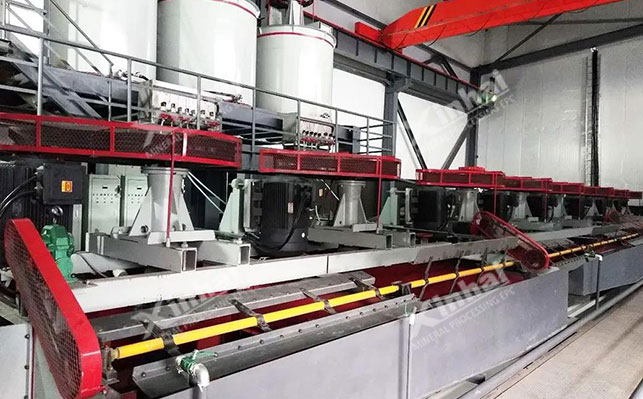
Barite is commonly separated by flotation in mineral processing operations. This kind of ore is often associated with fluorite, calcite, quartz and other salt minerals. The mineral composition can be divided into two categories: barite-quartz-calcite type ore and barite-fluorite type ore.
Direct flotation, flotation-gravity, mixed flotation (suppressed barite flotation to fluoride and suppressed fluorite flotation to barite) processes.

15311826613
Click to add WeChatThe direct flotation method is mainly suitable for processing barite-quartz-calcite type minerals. During flotation, inhibitors are first added to inhibit gangue minerals such as quartz and calcite. , then add anionic collectors (fatty acids, alkyl sulfates, petroleum sulfonates and phosphonic acid collectors, etc.) under weakly alkaline conditions. After rough selection, pass through multiple selections to obtain qualified recrystallization. stone.

This combined flotation method is also suitable for barite-quartz-calcite type minerals. First, add silicic acid Sodium and collector are used to remove quartz, and then based on the density difference between other gangue minerals (calcite) and barite, the barite concentrate is first obtained by gravity separation.

When selecting reagents for this process, combined flotation reagents are often used, and the flotation efficiency is better, mainly because quartz, calcite and barite are all It is a calcium ion type compound with similar crystal lattice and similar floatability. The effect of a single flotation agent is not ideal.
The mixed flotation process is mainly suitable for processing barite-fluorite minerals. This type of barite ore mixed flotation is divided into two types. There has always been a barite flotation process to suppress fluorspar, and the other is a barite flotation process to suppress fluorite.
Suppression of barite flotation fluorspar process: First obtain a mixed concentrate of barite and quartz through flotation, and then add inhibitors to suppress the barite ore. , float out fluorite ore, and then flotate barite from the fluorite tailings to obtain barite concentrate. Among them, flotation inhibitors mainly use tannins, starch, dextrin, sodium lignosulfonate and other polymeric carbohydrates, sodium silicate, sodium carbonate, sulfate, sodium hexametaphosphate, inorganic salts such as ferric ions and aluminum ions. and combination inhibitors formed by mixing them.

Suppressed fluorite flotation barite process: As above, two mixed concentrates are obtained by adding inhibitors, and then the barite is first flotated Concentrate, and then float the fluorspar ore from the tailings. By adding fatty acid collectors and sodium silicate, the fluorspar concentrate is obtained after multiple selections.
